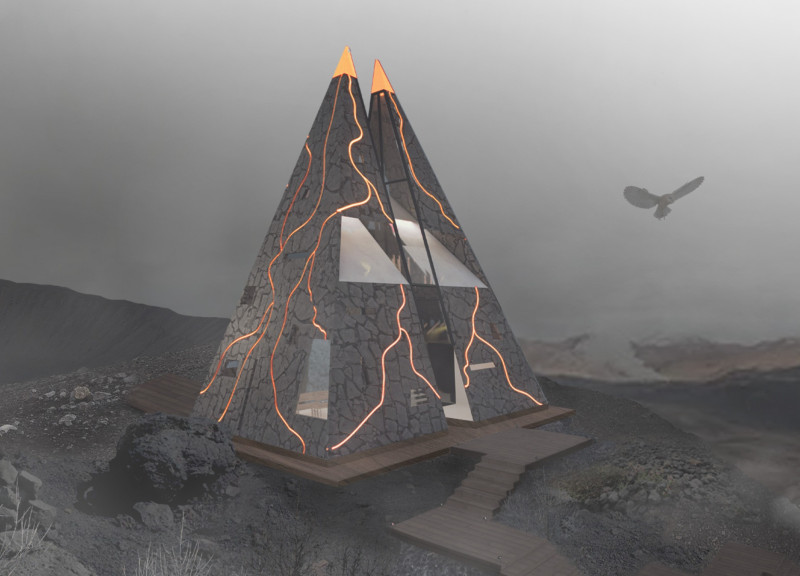5 key facts about this project
The design located at Hverfjall, a crater in northern Iceland, interacts thoughtfully with its striking landscape, which includes views of Lake Mývatn and the Dimmuborgir lava field. The project seeks to engage visitors while reflecting natural surroundings through a modern architectural approach. Functionality and design are balanced to create spaces that foster connection with the environment.
Layout and Organization
The layout includes two main sections: the east and west buildings. The west side consists of two floors, while the east side features a single level. This setup allows for a variety of experiences and supports different activities. An open-air bridge made of glass connects both sections on the second floor, assisting in wayfinding and promoting movement throughout the space.
Conceptual Framework
The design draws inspiration from the sacred Holy Cross, which embodies themes of resilience and aspiration. The building's alignment is carefully designed to capture natural light through windows placed to follow the sun's path. As sunlight changes over the day, it shapes the interior environment, enriching the experience for visitors and making the spaces feel alive.
Exterior Treatment
Bionic volcanic stone covers the exterior walls, tying the structure to the local geological context. This choice connects the building to its surrounding environment while enhancing its visual appeal. The façade incorporates several openings that offer different viewpoints, allowing visitors to appreciate the natural beauty of the area from various angles.
Structural and Material Considerations
The design features stainless steel and glass, which contribute to its contemporary feel. The ample use of glass creates transparency, blurring the lines between inside and outside. Stainless steel provides strength and supports a clean architectural form. This careful selection of materials emphasizes a balance between durability and lightness, enhancing the overall clarity of the design.
Light filters through the openings, creating shifts in the ambiance that invite exploration. Each visit offers a new experience, underscoring the relationship between architecture and nature as visitors engage with the space.


















































